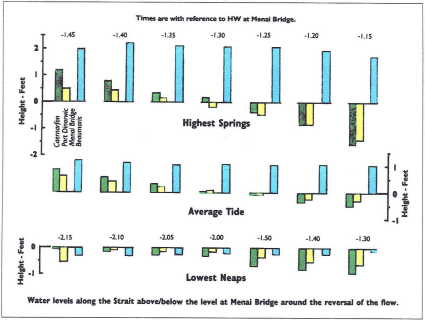
Fig. 1, which is self-explanatory, not only compares the direction of flow with the differences in water levels, but shows how these differences vary with the highest, lowest, and average height tides. Clearly the physical restrictions of the Strait will have greater impact on the greater volume of water trying to get through per unit time on the bigger tides, thus producing the bigger differences in the levels as shown in Fig.1. This naturally results in a stronger stream on the bigger tides, not as a direct response to the bigger tide in the usual way, but in response to those bigger differences in water levels.
Dr Toby Sherwin (Estuarial Research, Menai Bridge): "There are times during neaps when slack water just seems to go on and on, and others at springs when there's hardly any slack water at all." We can see this very clearly in Fig. 1. The change from positive to negative parity in water levels is very much more clearly defined on the bigger tides than it is at neaps when that change is a feeble and much more gradual process. Notice how much the same change which takes four hours on average tides takes only half that time at highest springs, while the total change at neaps for the full five hours shown is equalled in less than an hour on the bigger tides. This more clearly defined reversal in the relative water levels on the bigger tides translates into a more decisive and immediate reversal in the direction of the stream. So the first fact of importance here is the duration of the 'Slack' in the Swellies varies inversely with the height of the tide.

Fig 3 shows the same information but at shorter intervals around the reversal of the stream. Notice the build up of water east of Menai Bridge (Beaumaris) on the bigger tides which isn't present at neaps (the water heap?), and the potential this has for the immediate strength of the subsequent southwest-going stream. Also the marked descent through level parity on the bigger tides of Caernarvon and Port Dinorwic relative to Menai Bridge and Beaumaris, and that within15 minutes after level parity there is already a forty inch difference between the levels at Beaumaris and Port Dinorwic on highest springs, compared with a difference of only six inches at neaps.
EGo to page :- 1; 3; 4; 5; 6; 7; 8; 9;F